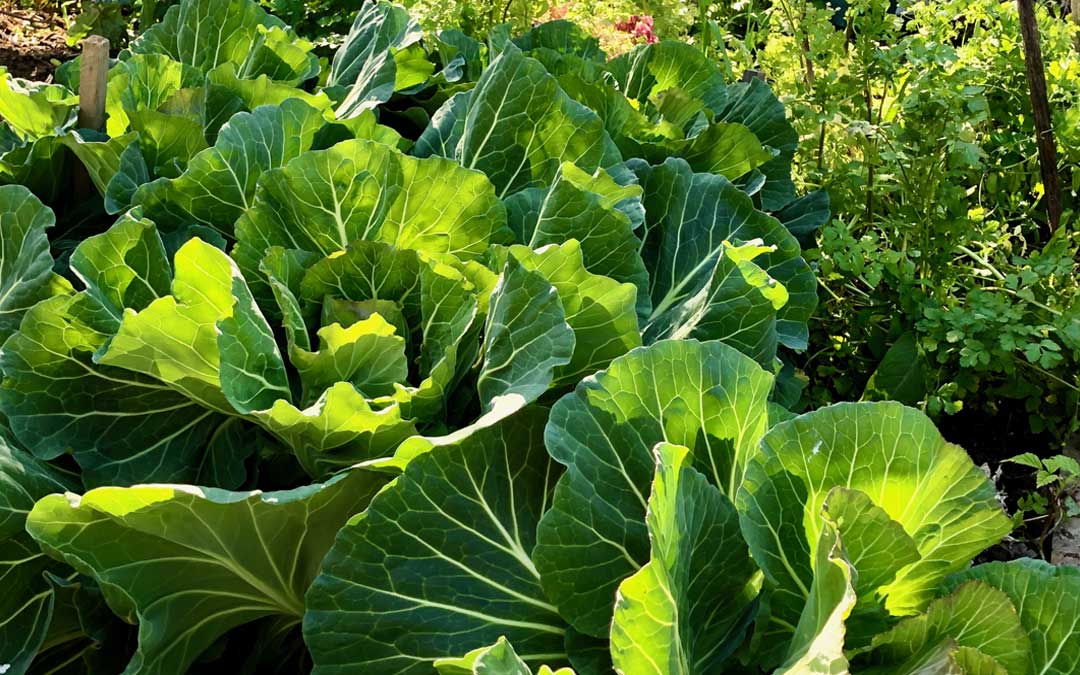How much sun do my vegies need?

Expert gardeners often bandy around certain terms as though we will automatically know what they are talking about. But do we? When it comes to terms like full sun, partial sun, partial shade and full shade, what do these really mean? And is afternoon sun the same as morning sun? As discussed below, the answers to these questions are a little more complex than at first might be expected.
The first point is that some people use the terms ‘partial sun’ and ‘partial shade’ interchangeably. However, drawing a distinction between the two is important because some plants in this broad category need more sun and are more heat tolerant and therefore need afternoon sun whilst others do poorly in afternoon sun and need the less intense morning sun. So, in this article:
- Full sun means 6-8 hours of direct, unfiltered* sun per day.
- Partial sun means 3-6 hours of full, unfiltered* afternoon sun per day.
- Partial shade refers to 3-6 hours of morning sun as opposed to afternoon sun.
- Full shade means less than 3 hours sun per day (according to some definitions) to no direct sunlight at all (according to other definitions).
*Unfiltered means that there is nothing in the way of the sun’s rays such as tree branches or shadowing.
There is also a nonsense term – full sun, partial shade. It’s one or the other! What it really means is that the plant will survive in partial shade but will not thrive or produce ripe fruit.
Because the rays of the sun pass through more of the atmosphere in the morning, sunlight is less intense before midday. In the afternoon, the sunlight is hotter than in the morning. Around midday, when the sun is directly overhead, it is strongest.
How hot the sun appears also depends on our latitude. Information from gardening books written for the UK and Europe will reflect their conditions not ours. Top temperatures in these regions in summer are usually 10 degrees below what we experience in Melbourne and this needs to be factored in along with the actual hours of sunlight. Local conditions are important!
While drought-tolerant and heat-tolerant plants, such as silver and grey plants and tough woody herbs, can tolerate hot sun for 9 hours a day, most veggies would burn in those conditions. Blistering, sunburn and heat stress are serious problems when we experience extreme summer heat, especially when temperatures hit the 40s.
But all vegetables need some sun to grow so none will grow well in total shade.
Within these two extremes:
- Vegetables which produce fruits generally like full sun, as the sun is an important element in producing the starches and sugars that give these vegetables their flavour. This includes tomatoes, eggplants, capsicum, chilli, cucumber, zucchini, pumpkin, sweetcorn, beans, peas and rockmelons. If you do not have sufficient direct sunlight for tomatoes, choose cherry tomatoes which because of their small fruit, will ripen with 3-4 hours sunlight. Plant eggplant in the hottest part of your garden, then capsicum in the second hottest and tomato in the third hottest area. Rockmelons do well if planted above fresh manure which acts as a heat bed early in the season when they require warm soil temperature to get an early enough start to produce fruit later in the season. Eggplants and capsicums, which need soil temperatures in the 20-30degC range to germinate, are best bought as seedlings, unless you have a heat mat, otherwise, like rockmelons, they will produce fruit too late for it to fully mature. Sun-loving vegetables will not produce a good, fully ripe crop with less than 6 hours direct sun per day, and can tolerate 8 hours. Beans and peas need full sun early in their season but do badly in the height of summer when it is too hot for them.
- The onion family also likes full sun. This includes onions, garlic, spring onions, shallots and leeks.
- Vegetables that produce roots grow best in partial sun – that is afternoon sun and morning shade. This includes carrots, parsnip, turnips, beetroot, radishes and potatoes.
- Vegetables where you eat the stems, buds or leaves generally prefer partial shade – that is morning sun and afternoon shade. These include brassicas such as kale, cabbage, broccoli, Brussels sprouts and cauliflower, and leaf crops such as silverbeet, spinach, cress, rocket and lettuce. It also includes celery, kohlrabi and globe artichoke. The darker the leaves, the less light the plant needs to grow (with silverbeet, spinach and watercress being examples). Be careful not to overwater vegetables growing in shade as there may be insufficient sun to dry the ground.
Written by Robin Gale-Baker. First published in the Local Food Connect newsletter 30 September 2020.
